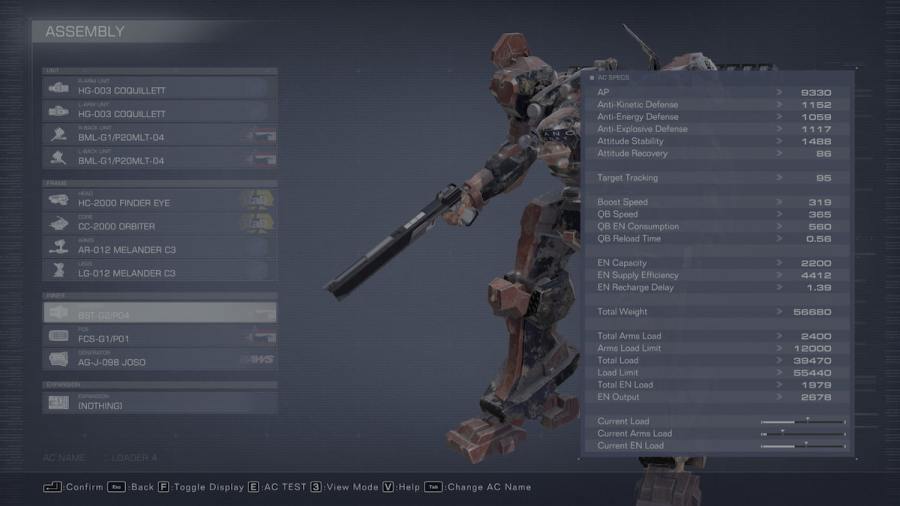The Armored Core series has always been known for having lots of complicated stats with which to manipulate and create your own personalized mech build. Armored Core 6 toned this down a notch, but there's still plenty to be confused about. While the process of building a mech is easier than ever, the everchanging stats can still make this a difficult undertaking. Fortunately, I'm a long-time Armored Core player and can give you the rundown of what each stat means in Armored Core 6.
What Stats do in Armored Core 6
Every stat in AC6 plays a bigger role than you might think. As such, understanding what each one does is imperative to the experience, especially if you're chasing after the elusive S Rank on missions:
- AP - Also called Armor Points, this stat represents your total health.
- Anti-Kinetic Defense - Your defense against weapons that deal Kinetic damage. Bullets, for example.
- Anti-Energy Defense - Your defense against weapons that deal Energy damage. Beam weapons and Laser swords, for example.
- Anti-Explosive Defense - Your defense against weapons that cause explosions. Rocket Launchers, for example.
- Attitude Stability - This stat represents your poise. The higher, the better. If this value depletes to zero while you're on a mission, you'll be staggered.
- Attitude Recovery - Maintains how fast or slow your poise recovers when damaged by attacks. Being lighter weight improves this stat by default.
- Target Tracking - When locked on, determines how accurate your weapons are. Firearm Specialisation from arm parts affect this value directly.
- Boost Speed - Your max movement speed when using Boost. Does not count Quick Boost.
- QB Speed - The speed of your initial Quick Boost. A higher value means a faster Quick Boost.
- QB EN Consumption - The amount of EN (Stamina) consumed when using a Quick Boost. A lower value is always better.
- QB Reload Time - Your cooldown in between Quick Boosts. A lower value is always better.
- EN Capacity - Your total Stamina for Boosting-style movements such as Quick Boost.
- EN Supply Efficiency - Your Stamina recovery speed. A higher value means faster recovery.
- EN Recharge Delay - Stamina recovery delay after a Stamina-requiring action. A lower value is better.
- Total Weight - How heavy your AC is. Affects movement speed.
- Total Arms Load - The weight of the weapons of your AC. Contributes toward Total Weight.
- Arms Load Limit - The maximum weight your AC's arms can carry without hindering performance. A higher number makes it easier to manage target tracking and recoil.
- Total Load - The total weight of all parts except Legs.
Related: All Armored Core 6 pre-order bonuses and edition comparisons
- Load Limit - The maximum weight your AC's Legs can support. One of the most important stats in the game for builds
- Total EN Load - All mechs need power, and this stat represents the power load of all equipped parts. For the sake of clarity: while EN is Stamina, for this stat, consider it a value for the Generator gear slot.
- EN Output - The power cost of your entire AC. A higher value means your equipped Generator can support higher energy-costing parts.
- Current Load - Your total load in proportion to the maximum load.
- Current Arms Load - The weight of both weapons in proportion to your maximum arm load.
- Current EN Load - Your power load in proportion to your power output.
With this beefy reference sheet in hand, you should now be equipped with all the information you need to make the ultimate mecha warfighter and bring flames to Rubicon as a whole.
For more quality guides and helpful information, check out the Armored Core 6 System Requirements right here on Pro Game Guides.
